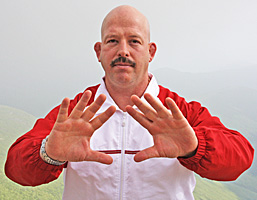Yesterday I sent an email to my fitness list at MattFurey.com, extolling the positive benefits of walking and jumping rope.
I wrote about a client who has gone from 477 pounds to 300.
No small feat, even though he’s still on the journey.
Getting fit, losing weight and exercising are all just as much a mental game as a physical one.
There are incredible psychological and neurological benefits to both walking and jumping rope, including awareness training on practices such as focusing on your breathing or counting the number of steps or jumps you are on.
Counting is good for the brain – and last time I checked, taking a deep breath or two is life-affirming, too.
So is looking at both sides of an issue…
One reader of yesterday’s email wrote to tell me that I missed the mark, that in the case of rope skipping. no rope was required.
He explained to me that, based on Psycho-Cybernetics, you could practice all the jumps without a rope, and get just as much benefit. Moreover, you’d feel great because all your jumps would be perfect.
What this man wrote contains some truth.
There is great benefit in “shadow boxing.” Not only did Dr. Maltz reference this in Psycho-Cybernetics, but I did so as well in the Theater of the Mind program produced by Nightingale-Conant.
Yet, there are other essentials for the brain that you obtain from jumping rope that are going to be missing if you’re jumping without a rope.
First, without a rope your brain and nervous system doesn’t learn timing and rhythm. It’s not just jumping, it’s knowing when to jump and having your jump get in sync with your hands and the rope.
Second, without a rope you are not developing spatial intelligence. With a rope your brain must learn where the rope is in space and time. You must know when the rope is overhead and beneath your feet, in front of you and behind you, as well as where your hands, wrists and arms are.
Third, Psycho-Cybernetics does not advocate doing things perfectly or never being challenged to overcome misses, setbacks, errors or failures.
On the contrary, much of the book is about zig-zagging your way to success, to enhanced skills, to a better way of practice.
If your brain isn’t being challenged to learn something new, on a regular basis, or to correct mistakes, then you may feel great about feeling perfect, but you’re making a huge mistake.
Part of the glory of learning to jump rope or the attainment of skill in any other area, is going through the mistakes. It’s learning to overcome them – not to figure out ways to avoid looking bad.
Yes, shadow boxing and practicing without any pressure to “get it right” is powerful. But where there’s a yin, there’s a yang.
Both are key.
Practice without pressure.
Make mistakes – correct course.
See it. Feel it. Be it.
Matt Furey

